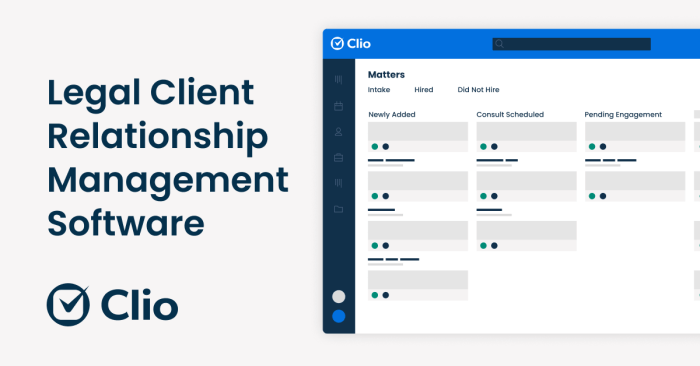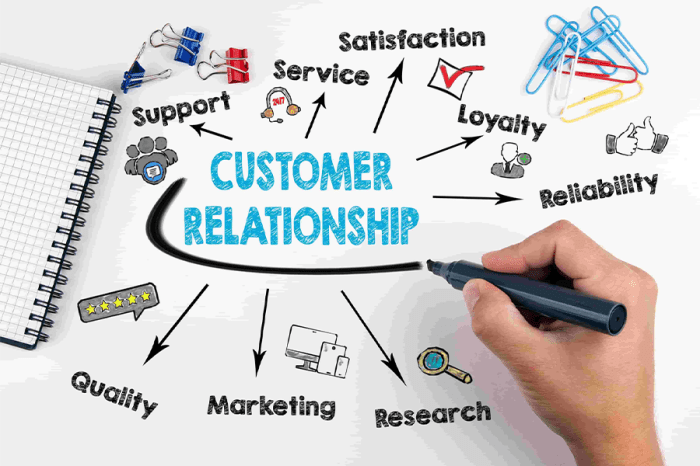Essential CRM Features for Small Law Firms

Crm for small law firms – A robust CRM system is no longer a luxury but a necessity for small law firms striving for efficiency and client satisfaction in today’s competitive legal landscape. Choosing the right CRM can significantly streamline operations, improve client communication, and ultimately boost profitability. This section will delve into the crucial features, integration aspects, and security considerations to help you make an informed decision.
Five Must-Have CRM Features for Small Law Firms
Selecting the right CRM features is paramount for optimizing workflow and client relationships. The following five features represent a core foundation for success.
- Contact Management: A comprehensive contact database is fundamental. This allows for detailed client profiles including contact information, case history, communication logs, and important deadlines. Efficient contact management prevents crucial information from being lost or overlooked, ensuring seamless client service.
- Case Management: Integrating case details directly within the CRM provides a centralized view of each case’s progress. This includes deadlines, tasks, documents, and communication history, enabling better organization and efficient task delegation.
- Document Management: Securely storing and accessing all relevant documents (contracts, pleadings, correspondence) within the CRM streamlines workflows and minimizes the risk of misplacing critical information. This ensures easy retrieval and collaboration among team members.
- Communication Tracking: A CRM should track all communication channels (email, phone calls, letters) associated with each client and case. This offers a complete audit trail, enhancing accountability and facilitating informed decision-making.
- Reporting and Analytics: Data-driven insights are vital for strategic decision-making. A CRM with robust reporting features allows for analyzing client acquisition costs, case win rates, and team performance, ultimately informing business strategies.
Integration with Other Legal Software
Seamless integration with existing legal software, such as case management systems and document management systems, is critical. This eliminates data silos, prevents duplication of effort, and fosters a unified workflow. For example, a seamless integration between a CRM and a case management system ensures that all case-related information is readily accessible from a single platform, reducing the risk of errors and delays.
This integrated approach dramatically improves efficiency and reduces the time spent on administrative tasks.
Cloud-Based vs. On-Premise CRM Solutions
The choice between cloud-based and on-premise CRM solutions depends on a firm’s specific needs and resources. Cloud-based CRMs offer scalability, accessibility, and cost-effectiveness through subscription models. They require minimal upfront investment and offer automatic updates, reducing IT maintenance overhead. On the other hand, on-premise solutions provide greater control over data and security, but demand significant upfront investment in hardware and software, along with ongoing maintenance costs.
Small firms often find cloud-based solutions more advantageous due to their flexibility and lower cost of entry.
Security Considerations for Sensitive Client Data
Protecting client data is paramount. When choosing a CRM, prioritize systems with robust security features such as data encryption both in transit and at rest, multi-factor authentication, access controls, and regular security audits. Compliance with relevant data privacy regulations (like GDPR or HIPAA, depending on location and client type) is essential. Choosing a reputable vendor with a proven track record of data security is crucial for maintaining client trust and avoiding potential legal repercussions.
Comparison of CRM Systems for Small Law Firms
The following table compares three popular CRM systems suitable for small law firms. Note that pricing can vary based on the number of users and features selected.
| CRM System | Key Features | Integration Capabilities | Pricing (Approximate) |
|---|---|---|---|
| ClientPoint | Contact management, case management, document management, communication tracking, reporting | Various legal software integrations | $50-$200/month |
| PracticePanther | Time tracking, billing, invoicing, contact management, case management | Limited integrations, but strong internal workflow | $39-$299/month |
| Clio Manage | Contact management, case management, time tracking, billing, document management, client portal | Extensive integrations with other legal tech solutions | $49-$299/month |
Cost and Return on Investment (ROI): Crm For Small Law Firms

Implementing a CRM system for your small law firm is an investment, not an expense. Understanding the associated costs and potential return is crucial for making an informed decision. This section will Artikel the various cost factors and provide a framework for evaluating the potential ROI.
Cost Factors Associated with CRM Implementation and Maintenance
Several factors contribute to the overall cost of a CRM system. These costs are not insurmountable, however, and understanding them allows for better budgeting and planning. These include the initial software purchase or subscription fees, the cost of training your staff, and ongoing support and maintenance expenses. Some systems offer tiered pricing based on the number of users or features, requiring careful consideration of your firm’s current and future needs.
Hidden costs, such as data migration from existing systems, should also be factored into your budget.
Calculating the ROI of a CRM System, Crm for small law firms
A simple model for calculating the ROI of a CRM system involves comparing the total costs against the total benefits. The formula is:
ROI = (Total Benefits – Total Costs) / Total Costs
. Total costs encompass software licensing, training, implementation, and ongoing maintenance. Total benefits include increased efficiency, improved client relations, and reduced operational costs (discussed further below). To illustrate, consider a firm spending $5,000 annually on a CRM, and realizing $10,000 in cost savings and increased revenue. The ROI would be:
(10000 – 5000) / 5000 = 1.0 or 100%
. This indicates a significant return on investment. Accurate ROI calculation necessitates careful tracking of both costs and benefits over time.
Potential Cost Savings Generated by a CRM System
A CRM system can generate substantial cost savings for a small law firm. These savings stem from increased efficiency and reduced operational costs. For example:
- Reduced administrative overhead: Automating tasks like client communication and scheduling frees up staff time for billable work.
- Improved time management: Better organization of cases and tasks leads to improved time management and reduced wasted time searching for information.
- Reduced errors: Centralized data storage minimizes the risk of errors associated with manual data entry and information discrepancies.
- Lower marketing costs: Targeted marketing campaigns based on client data can yield better results with lower expenditure.
Improved Client Relationships and Increased Efficiency in Billable Hours
Improved client relationships and increased efficiency directly translate to higher billable hours and increased revenue. Consider this hypothetical scenario: A small law firm with three attorneys experiences a 10% increase in billable hours due to improved time management facilitated by the CRM. Each attorney bills at an average of $200 per hour. If each attorney works 1700 billable hours per year, a 10% increase represents an additional 510 hours per attorney (1700
- 0.10 = 170 hours/attorney
- 3 attorneys = 510 hours). At $200/hour, this translates to an additional $102,000 in annual revenue (510 hours
- $200/hour). Furthermore, improved client relationships, fostered by timely communication and personalized service facilitated by the CRM, lead to increased client retention and referrals, further boosting revenue. The improved client experience reduces the need for extensive client follow-up, further freeing up attorney time.



